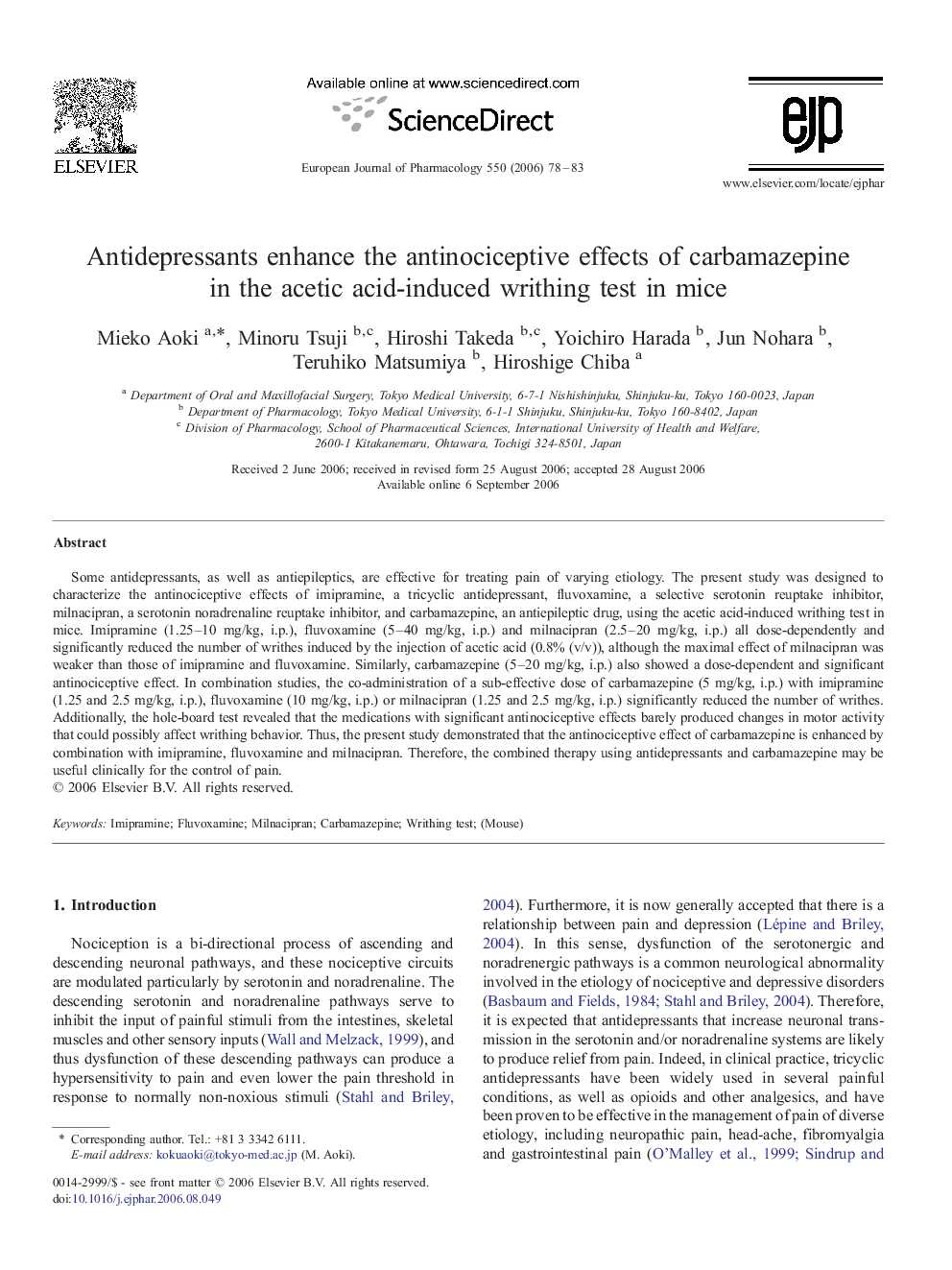| Article ID | Journal | Published Year | Pages | File Type |
|---|---|---|---|---|
| 2536657 | European Journal of Pharmacology | 2006 | 6 Pages |
Some antidepressants, as well as antiepileptics, are effective for treating pain of varying etiology. The present study was designed to characterize the antinociceptive effects of imipramine, a tricyclic antidepressant, fluvoxamine, a selective serotonin reuptake inhibitor, milnacipran, a serotonin noradrenaline reuptake inhibitor, and carbamazepine, an antiepileptic drug, using the acetic acid-induced writhing test in mice. Imipramine (1.25–10 mg/kg, i.p.), fluvoxamine (5–40 mg/kg, i.p.) and milnacipran (2.5–20 mg/kg, i.p.) all dose-dependently and significantly reduced the number of writhes induced by the injection of acetic acid (0.8% (v/v)), although the maximal effect of milnacipran was weaker than those of imipramine and fluvoxamine. Similarly, carbamazepine (5–20 mg/kg, i.p.) also showed a dose-dependent and significant antinociceptive effect. In combination studies, the co-administration of a sub-effective dose of carbamazepine (5 mg/kg, i.p.) with imipramine (1.25 and 2.5 mg/kg, i.p.), fluvoxamine (10 mg/kg, i.p.) or milnacipran (1.25 and 2.5 mg/kg, i.p.) significantly reduced the number of writhes. Additionally, the hole-board test revealed that the medications with significant antinociceptive effects barely produced changes in motor activity that could possibly affect writhing behavior. Thus, the present study demonstrated that the antinociceptive effect of carbamazepine is enhanced by combination with imipramine, fluvoxamine and milnacipran. Therefore, the combined therapy using antidepressants and carbamazepine may be useful clinically for the control of pain.
